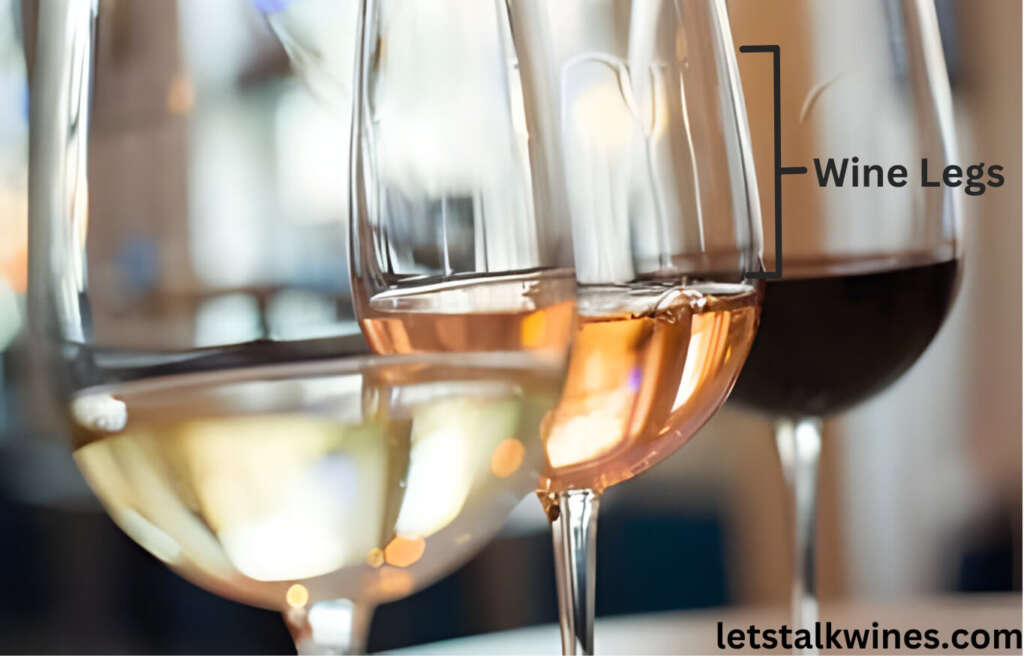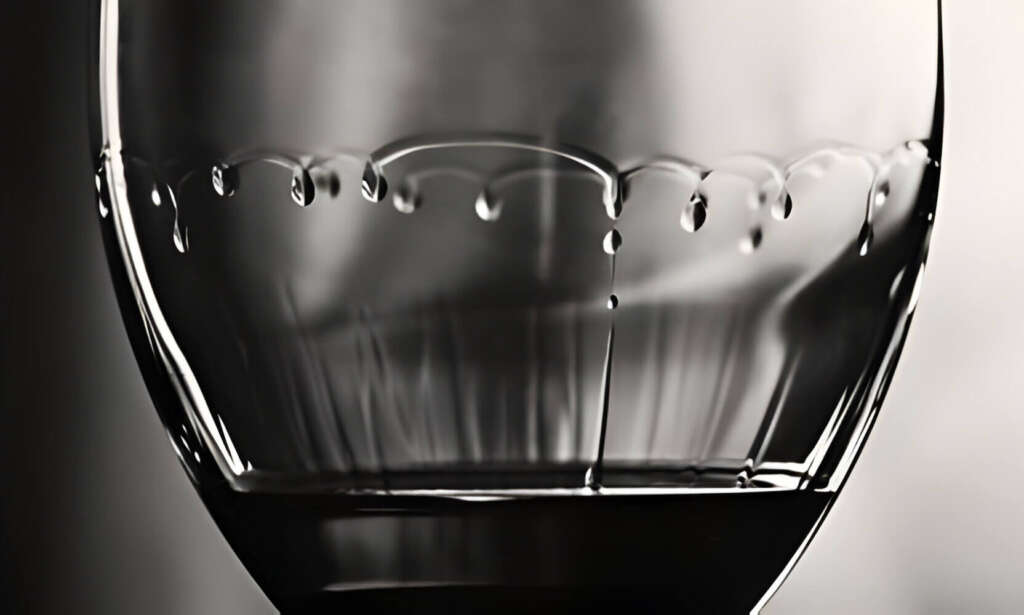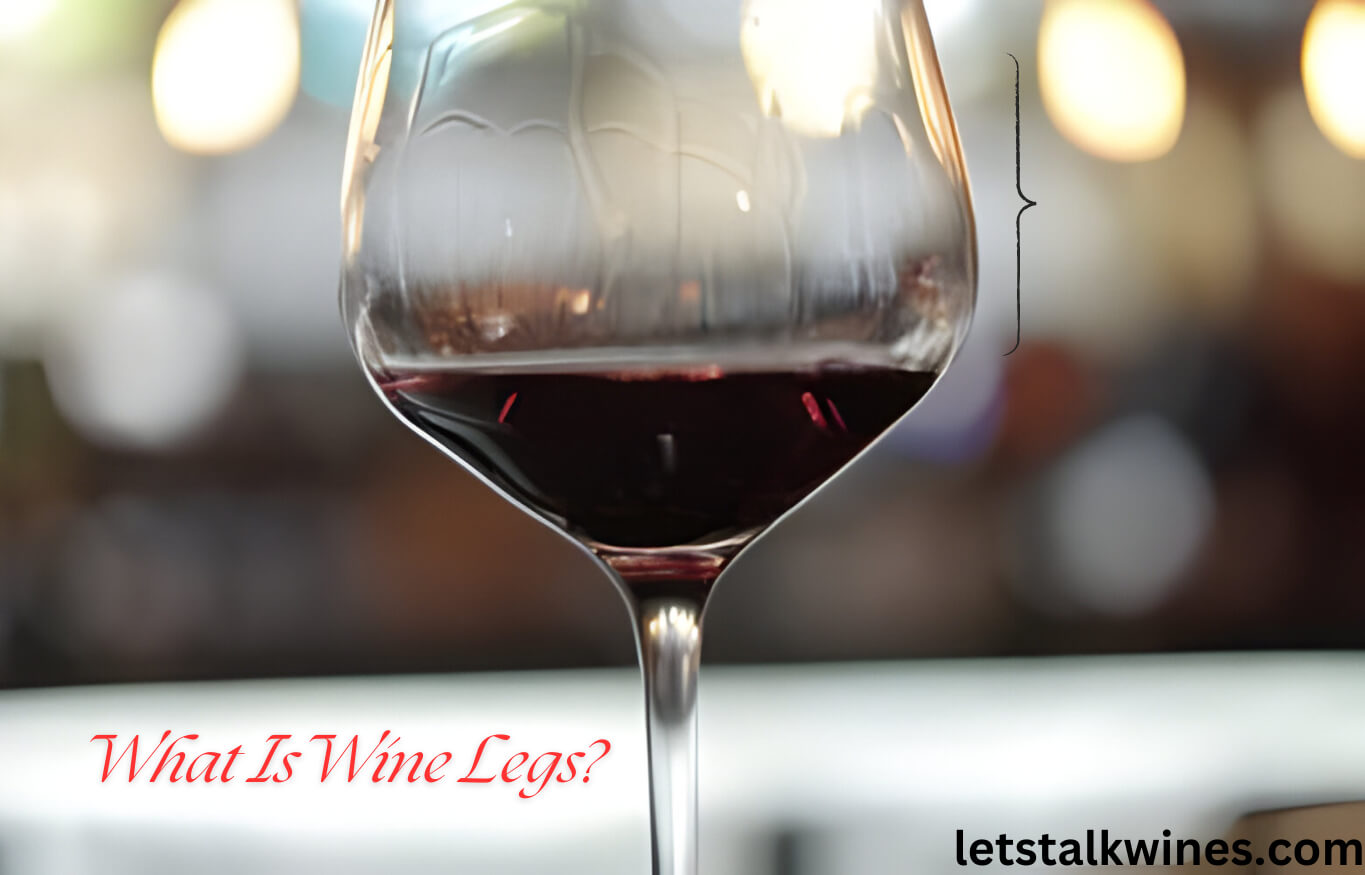Have you ever noticed those streaks that form and drip down the inside of your wine glass? Those mesmerizing trails left behind as the wine rolls around are commonly called “wine legs.” But what do these elusive legs really mean?
Some wine lovers believe that prominent, long-lasting legs indicate a high-quality, well-made wine. Others think legs have absolutely no correlation to quality at all.
The truth is, wine legs alone can’t tell you if a wine is good or not. But they can reveal some very interesting scientific facts about what’s happening inside that glass!
Prepare to unlock the secrets of those mysterious streaks and drips! By the end, you’ll impress friends as a bona fide “wine legs” expert.
What are Wine Legs? (A.K.A. Tears of Wine)
When you swirl wine in a glass, then tilt the glass back, you’ll see the wine glide back down the sides in a bright, rivulet pattern. Those streaks are called “wine legs” or “tears of wine.”
Here are a few other common names for this phenomenon:
- Wine Tears
- Window-Paning
- Church Windows
- Girnadas
- Crows’ Feet
These are not to be confused with “nail polish,” a entirely different wine flaw!
No matter what you call them, those slow-dripping trails creeping down the glass after a swirl have fascinated wine drinkers for ages. The patterns almost make it appear the wine is “crying” or shedding tears as it flows.
While their appearance is undeniably captivating, wine legs alone don’t directly indicate quality or taste. However, these rivulets provide clues about several properties and processes happening inside the wine itself.

What is Wine Legs Meaning?
In essence, prominent and long-lasting wine legs signify higher levels of surface tension within the wine. This surface tension causes the liquid to bead up more dramatically rather than slide evenly down the glass.
Wines with greater viscosity, higher alcohol, sugar, glycerol, and other components will exhibit more pronounced, long-lasting legs or tears due to increased surface tension effects.
So while eye-catching legs don’t automatically mean a wine is “good” or not, they can reveal insights about characteristics like:
- Body and Viscosity
- Alcohol Percentage
- Sugar/Sweetness Levels
- Age of the Wine
- Other Dissolved Compounds
In other words, those tears and trails hold clues to the overall makeup and profile of what’s in your glass! But decoding those clues takes understanding the science behind this phenomenon.
The Science Behind Wine Legs
While swirling creates the initial momentum for legs to form, it’s actually a principle of physics called surface tension that’s responsible for the wine’s climbing action.
Surface tension refers to the cohesive forces between molecules on the liquid’s surface. These forces cause the liquid to bead up and resist an even distribution along the glass.
When the alcohol and water in wine evaporate from the sides of the glass, cohesive forces pull the liquid back into thicker droplets that creep back down.
The cooler a room’s temperature, the more pronounced wine legs become. This is because cooler air cannot hold as much evaporated alcohol vapor, allowing more pronounced bead-up droplets to form.
Certain characteristics strengthen or diminish the effects of surface tension in wine:
- High alcohol content = stronger surface tension
- Higher viscosity (thickness) = stronger surface tension
- Higher sugar or glycerol content = stronger surface tension
- Older wines = weaker surface tension over time
So what exactly do prominent wine legs indicate about a wine’s makeup? More on that shortly!
Judging Quality from Wine Legs
It’s a common assumption that wines with long, prominent legs correlate to higher quality and better taste. But is this actually accurate?
The short answer: not necessarily!
While legs can provide some broad clues about elements like alcohol, body, and age, they do not directly signify good or bad quality.
That said, some generalizations can be made about the types of wines that tend to exhibit more pronounced legs:
🍷 Full-Bodied Reds – Bigger, bolder dry reds like Cabernet Sauvignon, Malbec, etc. develop thicker legs from higher alcohol and glycerol levels.
🍷 Fortified & Dessert Wines – Sherries, Ports, and other sweet wines get prominent legs from high sugar/alcohol.
🍷 Older Wines – Older vintages gradually lose some surface tension over time, leading to more pronounced tears.
However, delicious and high-quality light-bodied wines like Pinot Noir or crisp Sauvignon Blanc often lack prominent legs. So legs should never be the sole factor in judging quality.
In fact, intense legs can occasionally be the sign of an undesirable quality – legging in young, inexpensive wines may indicate the winemaker added extra sugar, glycerol, or other additives to artificially bulk it up.
So while prominent legs often coincide with boldness, sweetness, and age, they only reveal part of the story. Tasting remains the ultimate way to discern actual quality!

What Wine Legs Indicate About a Wine
While wine legs don’t directly equate to good or bad quality, they provide visible evidence of specific chemical processes and properties happening inside the glass.
Here are some of the broad conclusions you can infer from prominent or non-existent legs:
High Alcohol Content Thick, long legs are a very strong indicator of high alcohol levels in a wine. The ethanol alcohol creates more prominent surface tension forces. Generally, full-bodied reds and fortified wines over 13.5% will show serious legs.
Viscosity / Body Pronounced legs often point to a full-bodied, viscous wine. The thicker, more glycerol-rich consistency helps create more dramatic legs as the wine flows back down. Light-bodied wines lack this thickness, so legs are less noticeable.
Sugar Content Legs can also indicate high residual sugar levels. The sugars strengthen surface tension effects. Dessert wines like Port often get nice “church window” legs from sweetness alone.
Age / Oak Aging As wines age, their surface tension decreases, producing more tears. However, most wines that underwent oak aging tend to retain tear-forming properties for longer.
Temperature The colder a wine’s serving temperature, the more its legs are accentuated from high surface tension. At warmer temps, legs become lighter and less dramatic.
While legs alone don’t judge quality, they visually represent some key components. If you take all the legs clues together, you can make an educated guess about the weight, viscosity, sweetness and other properties of what’s in your glass!
Don’t Judge a Book (of Wine) by Its Legs
So the next time you swirl a glass of wine, don’t obsess over the legs to affirm quality. Those droplets only hint at some aspects of a wine’s makeup.
No matter how striking or faint the tears, your senses of smell, taste, and personal preferences should guide your quality assessment – not just the show those legs put on! After all, isn’t discerning great wine all about trusting your own palate?
Still, understanding wine legs provides engaging insight into the physics and surface tension at work behind the scenes. Just don’t mistake them as gospel for judging quality! Legs come in all shapes and forms on both fantastic and unpalatable wines.
However you choose to appreciate this phenomenon, here’s to adding a little extra perspective, knowledge, and fun to your next wine drinking experience! Cherish those streaming legs for the alluring preview they provide of a wine’s overall style and character.
There’s nothing quite like appreciating the beautiful dance of wine in motion. What could be more uplifting than taking a moment to stop, watch, and admire the subtle show those tears of wine create before your very eyes?
Cheers!
Frequently Asked Questions
How do you evaluate wine legs?
To check out a wine’s legs, swirl the wine hard in your glass to make it spin. Then tilt the glass to the side. Look for the dripping trails running down the sides of the glass. The thicker and slower the drips, the more legs the wine has.
What are wine legs in French?
In the French language, wine legs are called the “jambes” or “larmes” of the wine. Those words mean “legs” or “tears.”
Are wine legs good or bad?
Wine legs aren’t good or bad by themselves. They just give you hints about the wine, like if it’s strong or thick. But you have to taste the wine to know if it’s good quality or not. Both awesome and not-so-great wines can have lots of legs.
What do wine legs look like?
Wine legs look like see-through streaks and drips that slowly creep down the inside of your glass after you swirl the wine. Bigger, fuller wines have thicker, longer legs while lighter wines have skinnier, faster drips.
What are whisky legs?
Whisky legs are the same thing as wine legs, but with whiskey instead! When you swirl whiskey in a glass, the alcohol makes drippy legs form on the sides, just like wine does.
Which wine has the most legs?
Very full-bodied, thick red wines like Cabernet and Syrah usually have the biggest, longest-lasting legs because of their higher alcohol. Dessert wines like Port also get crazy amounts of legs from the sweetness.
What do wine fingers mean?
Wine fingers isn’t an official term, but some people use it to mean the thick, fingery-looking drips that fall down the glass when swirling. It’s just another way to describe really prominent wine legs.



